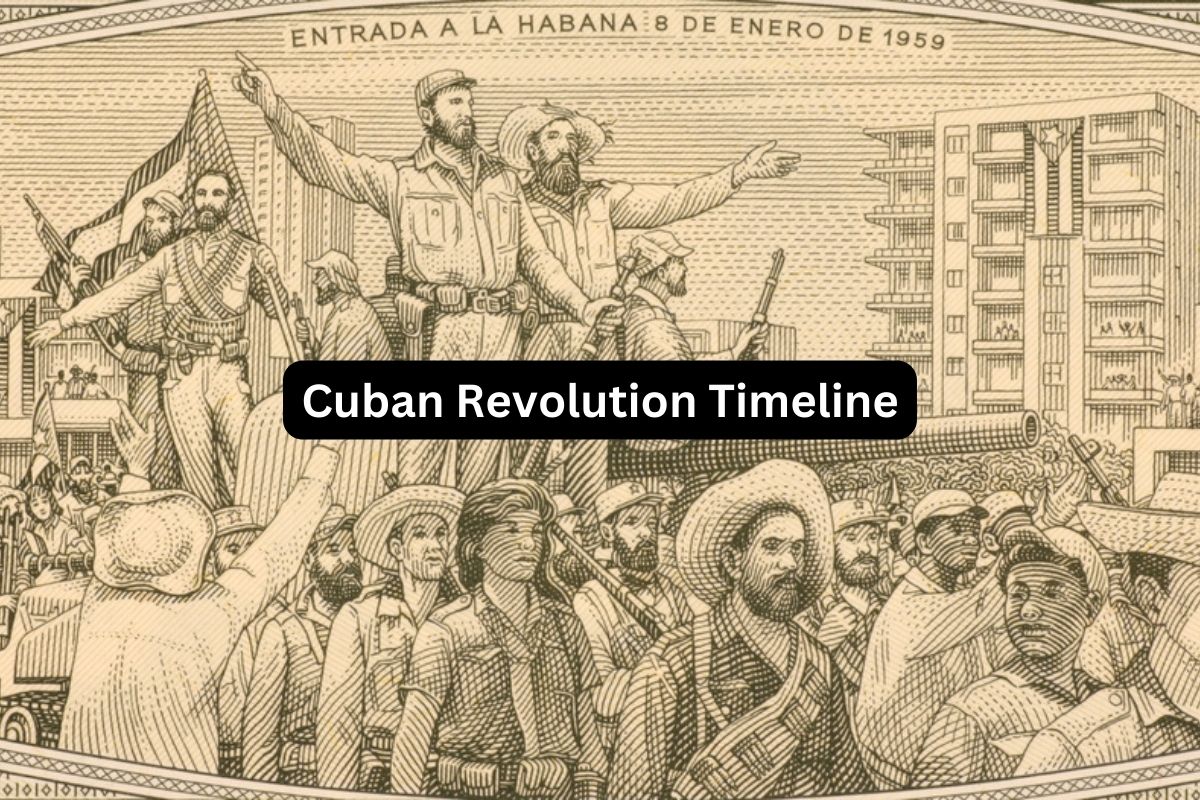The Cuban Revolution, a watershed moment in the history of the Caribbean island nation, marked a radical departure from its past and set the stage for decades of political, social, and economic transformation.
Led by the charismatic revolutionary Fidel Castro, the Cuban people rose up against the oppressive regime of Fulgencio Batista, ultimately toppling his dictatorship and establishing a new revolutionary government.
From the daring guerrilla warfare in the Sierra Maestra mountains to the geopolitical tensions of the Cold War, the Cuban Revolution captivated the world’s attention and left an indelible mark on Cuba and the broader global landscape.
In this article, we delve into the key events and repercussions of the Cuban Revolution, tracing its trajectory from the early stages of resistance to the establishment of a communist state and its enduring impact on Cuban society and international relations.
| Year | Event |
|---|---|
| 1933 | Overthrow of President Gerardo Machado; political instability in Cuba. |
| 1940 | Adoption of a new constitution; Fulgencio Batista elected president. |
| 1952 | Fulgencio Batista stages a coup, seizing power in Cuba. |
| 1953 | July 26th – Fidel Castro leads an unsuccessful attack on the Moncada Barracks. |
| 1955 | Fidel and Raúl Castro released from prison; go into exile in Mexico. |
| 1956 | Castro, Guevara, and revolutionaries return to Cuba aboard the yacht Granma. |
| 1958 | Rebels gain strength; capture Santa Clara; Batista flees Cuba. |
| 1959 | January 1st – Fidel Castro’s forces take control of Havana; end of the Cuban Revolution. |
| 1959 | Fidel Castro becomes Prime Minister; begins implementing reforms. |
| 1960 | Cuba aligns with the Soviet Union; US imposes trade embargo. |
| 1961 | Bay of Pigs invasion fails. |
| 1962 | Cuban Missile Crisis brings world to brink of nuclear war. |
| Cuba becomes a one-party communist state under Fidel Castro’s government. |
Timeline of the Cuban Revolution
1933: Overthrow of President Gerardo Machado; political instability in Cuba
President Gerardo Machado’s authoritarian rule sparked widespread discontent among the Cuban population. In response to his oppressive regime, a coalition of civilian and military forces orchestrated a coup d’état, overthrowing Machado in 1933.
Also Read: Facts About the Cuban Revolution
This event marked the beginning of a turbulent period in Cuban politics characterized by frequent changes in leadership and political instability.
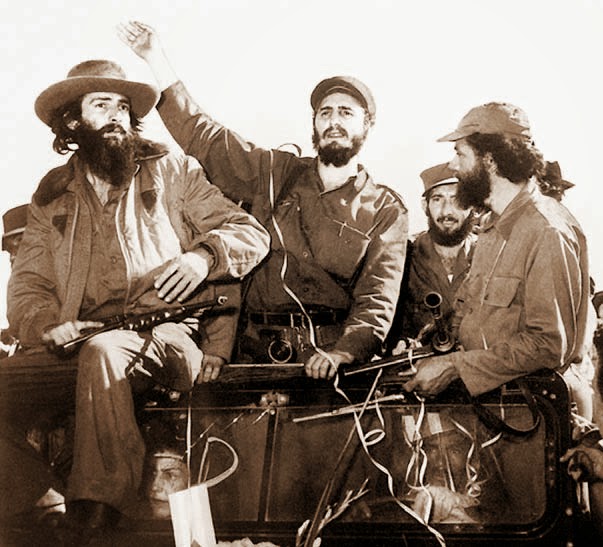
1940: Adoption of a new constitution; Fulgencio Batista elected president
In 1940, Cuba adopted a new constitution aimed at establishing democratic governance and protecting civil liberties. Fulgencio Batista, a former army sergeant who rose to power through political maneuvering, was elected president under the new constitution.
Despite the promise of democracy, Batista’s presidency was marred by corruption, repression, and favoritism towards the interests of the elite.
1952: Fulgencio Batista stages a coup, seizing power in Cuba
In 1952, Fulgencio Batista staged a military coup, seizing control of the Cuban government and establishing himself as the country’s dictator.
Batista’s coup d’état marked a significant setback for democracy in Cuba and provoked widespread condemnation both domestically and internationally.
Also Read: Fidel Castro Facts
The suppression of political dissent and the concentration of power in the hands of the Batista regime fueled growing discontent among the Cuban population, setting the stage for the revolutionary movements that would follow.
1953: July 26th – Fidel Castro leads an unsuccessful attack on the Moncada Barracks
On July 26, 1953, Fidel Castro, along with a group of approximately 135 armed revolutionaries, launched an audacious attack on the Moncada Barracks in Santiago de Cuba.
The goal of the attack was to overthrow the Batista regime and spark a popular uprising against his dictatorship.
However, the attack was poorly planned and quickly met with fierce resistance from government forces. Despite initial hopes for success, the assault ended in failure, resulting in the deaths of many rebels and the capture of Castro and his surviving followers.
1955: Fidel and Raúl Castro released from prison; go into exile in Mexico
Following their capture after the failed Moncada Barracks attack, Fidel Castro and his brother Raúl were imprisoned by the Batista regime. However, in 1955, the Castro brothers were released from prison as part of a general amnesty declared by the Batista government.
Upon their release, Fidel and Raúl Castro went into exile in Mexico, where they sought to regroup and continue their revolutionary efforts. It was during their time in Mexico that they would meet and form crucial alliances with other key figures, including the Argentine revolutionary Ernesto “Che” Guevara.
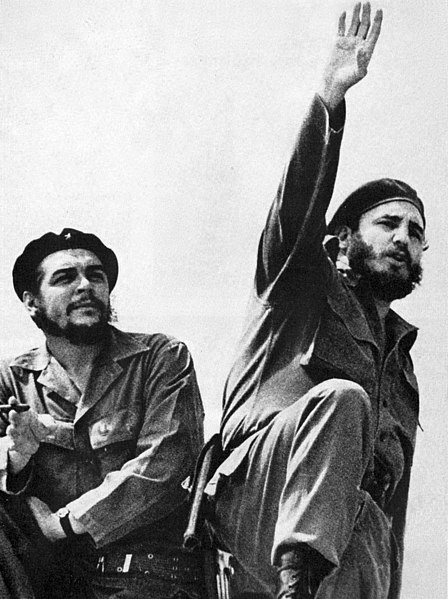
1956: Castro, Guevara, and revolutionaries return to Cuba aboard the yacht Granma
In December 1956, Fidel Castro, along with his brother Raúl, Ernesto “Che” Guevara, and a group of approximately 80 revolutionaries, returned to Cuba aboard the yacht Granma. Their aim was to ignite a popular uprising against the Batista regime and overthrow the dictatorship.
However, their landing in Cuba was met with immediate opposition from government forces, leading to a fierce battle in which many of the rebels were killed or captured.
Despite the setback, a small group of survivors, including Fidel and Raúl Castro and Che Guevara, managed to escape into the rugged terrain of the Sierra Maestra mountains, where they would launch a protracted guerrilla war against the Batista regime.
This marked the beginning of the armed struggle that would ultimately lead to the overthrow of Batista and the establishment of Fidel Castro’s revolutionary government in Cuba.
1958: Rebels gain strength; capture Santa Clara; Batista flees Cuba
In December 1958, the rebel forces, led by Fidel Castro and his July 26th Movement, achieved a significant victory by capturing the strategically important city of Santa Clara. This victory effectively cut off Batista’s forces and severely undermined his control over the country.
Facing mounting pressure and dwindling support, Batista realized the untenability of his position and fled Cuba on January 1, 1959. His flight marked the end of his regime and signaled the imminent triumph of the Cuban Revolution.
1959: January 1st – Fidel Castro’s forces take control of Havana; end of the Cuban Revolution
With Batista’s departure, Fidel Castro’s revolutionary forces took control of Havana and effectively seized power in Cuba. On February 16, 1959, Fidel Castro was sworn in as Prime Minister, marking the official beginning of his government’s rule.
Castro’s rise to power ushered in a new era of revolutionary governance in Cuba and marked a profound shift in the country’s political landscape.
1959: Fidel Castro becomes Prime Minister; begins implementing reforms
Following the establishment of his government, Fidel Castro wasted no time in implementing a series of sweeping social, economic, and political reforms.
These reforms aimed to address longstanding grievances and inequalities in Cuban society, including the redistribution of land, the nationalization of key industries, and the expansion of social welfare programs.
Castro’s government also embarked on ambitious projects to improve literacy rates, healthcare, and education, with the goal of creating a more equitable and just society.
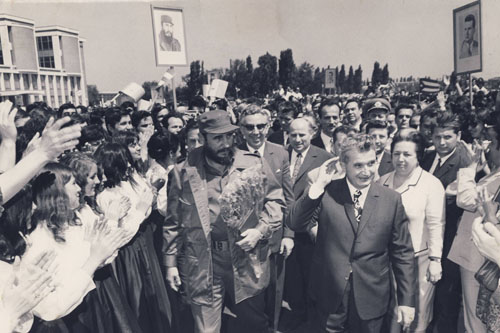
1960: Cuba aligns with the Soviet Union; US imposes trade embargo
As Castro consolidated his power and pursued his revolutionary agenda, Cuba’s relationship with the United States deteriorated rapidly. In response to Castro’s radical policies and his alignment with the Soviet Union, the United States imposed a comprehensive trade embargo on Cuba in 1960.
This embargo, which remains in place to this day, severely restricted economic and diplomatic relations between the two countries and marked the beginning of decades of hostility and confrontation between the Cuban government and the United States.
Cuba’s alignment with the Soviet Union also deepened during this period, as the two countries forged close political, economic, and military ties, further exacerbating Cold War tensions in the region.
1961: Bay of Pigs invasion fails
In April 1961, the United States, under the newly elected President John F. Kennedy, launched a covert military operation known as the Bay of Pigs invasion. The operation, planned and financed by the Central Intelligence Agency (CIA), aimed to overthrow Fidel Castro’s government by supporting a paramilitary force of Cuban exiles.
However, the invasion ended in failure within days, as Cuban armed forces quickly defeated the invading forces. The Bay of Pigs invasion was a humiliating defeat for the United States and further strengthened Castro’s grip on power in Cuba.
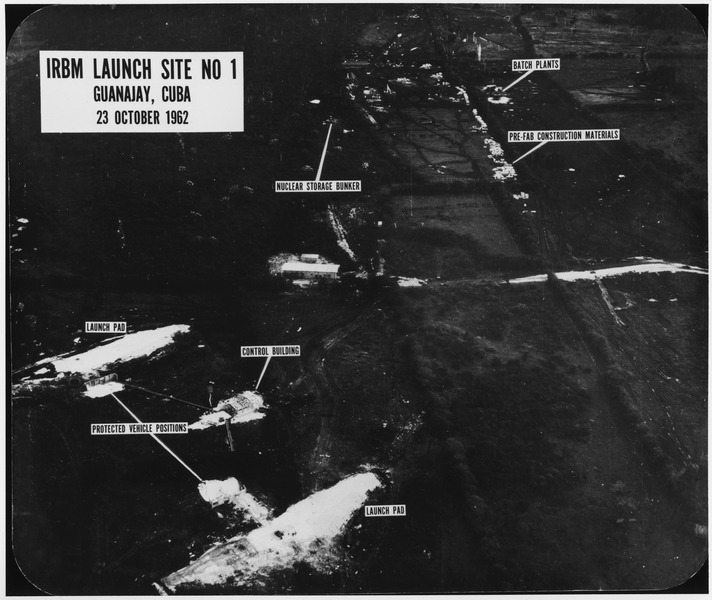
1962: Cuban Missile Crisis brings world to brink of nuclear war
The Cuban Missile Crisis, arguably the most intense confrontation of the Cold War, occurred in October 1962. The crisis was sparked by the discovery of Soviet nuclear missiles in Cuba, which were installed in response to perceived threats from the United States.
The presence of these missiles brought the world to the brink of nuclear war, as tensions between the United States and the Soviet Union reached unprecedented levels.
After tense negotiations, a resolution was reached in which the Soviet Union agreed to remove its missiles from Cuba in exchange for the United States promising not to invade the island and secretly agreeing to remove its own missiles from Turkey.
The Cuban Missile Crisis had a profound impact on international relations and led to increased efforts to reduce Cold War tensions through diplomatic means.
Late 20th Century: Cuba becomes a one-party communist state under Fidel Castro’s government
Following the Cuban Revolution, Cuba underwent significant political, social, and economic changes under Fidel Castro’s leadership. The country transitioned into a one-party communist state, with the Cuban Communist Party (PCC) holding a monopoly on political power.
Castro’s government implemented a wide range of socialist reforms, including the nationalization of industries, collectivization of agriculture, and the establishment of universal healthcare and education systems. These reforms led to improvements in social indicators such as literacy rates and life expectancy, but also contributed to economic stagnation and political repression.
Cuba’s close alignment with the Soviet Union during the Cold War provided economic and military support but also made the country vulnerable to international isolation and economic hardship following the collapse of the Soviet bloc in the early 1990s.
Despite these challenges, Cuba remained a symbol of defiance against American imperialism and a beacon of socialist revolution for many around the world.
